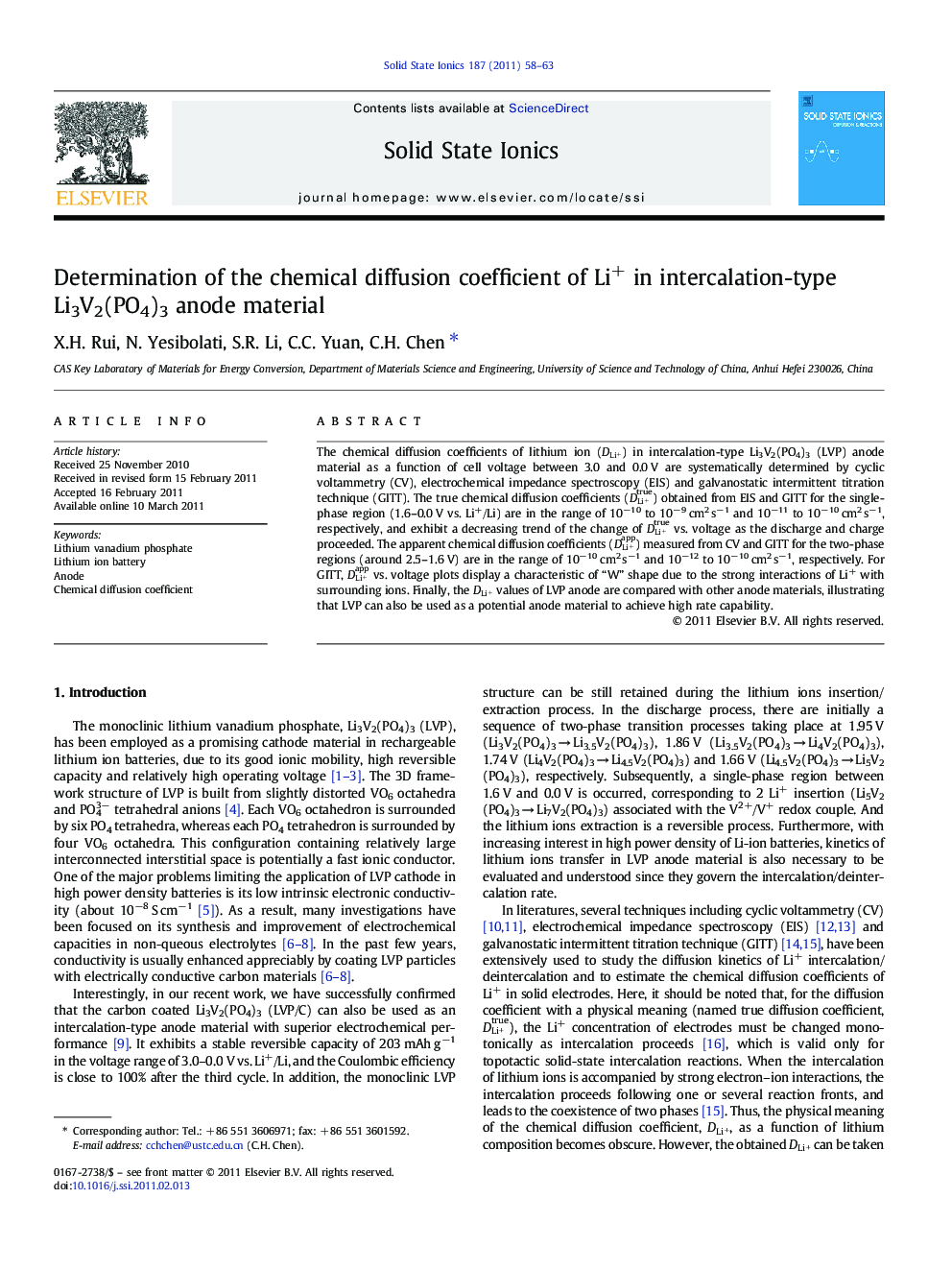| Article ID | Journal | Published Year | Pages | File Type |
|---|---|---|---|---|
| 1298260 | Solid State Ionics | 2011 | 6 Pages |
The chemical diffusion coefficients of lithium ion (DLi+) in intercalation-type Li3V2(PO4)3 (LVP) anode material as a function of cell voltage between 3.0 and 0.0 V are systematically determined by cyclic voltammetry (CV), electrochemical impedance spectroscopy (EIS) and galvanostatic intermittent titration technique (GITT). The true chemical diffusion coefficients (DLi+true) obtained from EIS and GITT for the single-phase region (1.6–0.0 V vs. Li+/Li) are in the range of 10−10 to 10−9 cm2 s−1 and 10−11 to 10−10 cm2 s−1, respectively, and exhibit a decreasing trend of the change of DLi+true vs. voltage as the discharge and charge proceeded. The apparent chemical diffusion coefficients (DLi+app) measured from CV and GITT for the two-phase regions (around 2.5–1.6 V) are in the range of 10−10 cm2 s−1 and 10−12 to 10−10 cm2 s−1, respectively. For GITT, DLi+app vs. voltage plots display a characteristic of “W” shape due to the strong interactions of Li+ with surrounding ions. Finally, the DLi+ values of LVP anode are compared with other anode materials, illustrating that LVP can also be used as a potential anode material to achieve high rate capability.
Research Highlights► The Li3V2(PO4)3 is used as an intercalation-type anode material. ► The lithium transport property in Li3V2(PO4)3 at low potentials is investigated. ► True and apparent diffusion coefficients are measured by three different methods.
